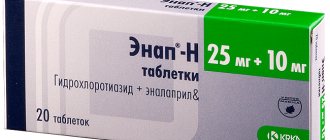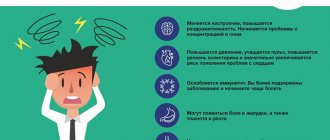Long-term compression of the median nerve between the joints and tendons of the wrist leads to compression-ischemic neuropathy, which is also called carpal tunnel syndrome. The phenomenon does not apply to diseases of an infectious and degenerative nature. Carpal tunnel syndrome mainly occurs due to mechanical trauma, endocrine disorders, inflammation of bone structures or tumor growth.
A pinched nerve is caused by hardening of the surrounding tendons and thickening or swelling of the sheath of the neurons. Such changes lead to severe pain in the hands, tingling and numbness of the fingers. Unpleasant sensations are also observed with prolonged overstrain of the wrist muscles. A timely examination, correct diagnosis and comprehensive treatment will help the patient quickly alleviate the condition and stop the progression of the disease.
The concept of carpal tunnel syndrome
There are two types of carpal neuropathy:
- Primary - manifests itself as an independent pathology that does not depend on the work of other systems in the body. As a rule, the disease occurs due to constant dynamic and static load on the hands.
- Secondary - develops as a result of the progression of a disease (arthritis, arthrosis, rheumatism).
Carpal tunnel syndrome is more common in women than in men. This is explained by the relatively small volume and size of the carpal tunnel in women. This disease has a chronic course with frequent changes in phases of exacerbation and remission.
Clinical signs of pathology are characterized by varying degrees of severity depending on the stage of development of the disease.
Etiology
Any process that leads to a decrease in the carpal tunnel or an increase in the volume of tissue within the passage itself becomes a source of development of carpal tunnel syndrome. Often the problem is associated with various hand injuries: fractures, sprains, dislocations.
In addition, during pregnancy favorable conditions are created for the progression of the disease. During this period, especially in the last trimester, a lot of fluid accumulates in the expectant mother’s body, and swelling appears in different parts of the body.
Pathology code according to ICD-10 (International Classification of Diseases): G56.0 - Carpal tunnel syndrome.
Swelling of the hands leads to compression of the synovial membranes, causing compression (compression) of the median nerve of the palms. People who abuse alcohol and smoke frequently are also at risk. In this category of patients, blood circulation in the upper extremities is impaired, which leads to the occurrence of tunnel syndrome.
These negative manifestations are observed in all people, regardless of age category. Chronic diseases (diabetes mellitus, thyroid goiter, rheumatism, osteoporosis) are also particularly dangerous, as they contribute to the development of carpal tunnel pathology.
Factors that provoke compression-ischemic neuropathy are divided into 3 groups:
- Anatomical. They include: abnormal congenital wrist structure, improperly fused joints after a fracture, and a narrow hand canal.
- Physiological. These include the following reasons: neoplasms of unspecified etiology; inflammatory process of tendons, wrist joint or soft tissues caused by obesity, gout, hormonal changes, and infection.
- Purchased. This group includes factors related to a person’s lifestyle and profession. As a rule, the disease is provoked by constant monotonous movements of the wrists. This category of conditions includes the following professions: programmer, cashier, seamstress, musician, builder, assembly line worker, etc. Most often, the first symptoms of carpal tunnel syndrome appear at the age of 30, and its peak occurs at the age of 40-50.
In addition, the occurrence of the disease is influenced by the hereditary factor and the gender of the person. Women over 45 years of age are more prone to developing pathology.
Symptoms
At an early stage of the development of neurological pathology, trembling in the hands, itching and slight tingling in the fingers appear. Usually the patient does not even pay attention to such symptoms, which is a big mistake on his part. Some signs of pathology may appear much later. Then they begin to worry about pain and heaviness in the upper extremities, numbness of the wrist, loss of sensitivity, burning and crawling on the skin.
Often, people suffering from carpal tunnel syndrome have difficulty sleeping at night and have a sleep disorder. This is due to constant pain and cramps in the hands, severe numbness of the fingers and paresthesia (increased sensitivity, pins and needles sensation). Over time, such individuals experience muscle atrophy, impaired motor function, and problems with fine motor skills.
At the initial stage of development of the pathology, symptoms are temporary. It is enough to change the position of your hands, do a few exercises and you can get rid of the discomfort. However, with advanced carpal tunnel syndrome, such measures no longer help eliminate discomfort.
What is characteristic of carpal tunnel syndrome?
Have you been trying to heal your JOINTS for many years?
Head of the Institute for Joint Treatment: “You will be amazed at how easy it is to heal your joints by taking every day...
Read more "
Carpal tunnel syndrome (ICD 10 G56.0) is a common problem that affects the function of the hand and wrist.
The disorder occurs when a nerve inside the wrist is compressed.
Any condition that affects the size of the canal or causes tissue to grow inside it can trigger the syndrome.
What happens when there is a violation
The wrist is surrounded by bundles of fibrous tissue that provide support for the joint. The space between these fibrous strips of tissue and the bony parts of the wrist is the carpal tunnel.
The median nerve, which passes through the wrist, provides sensation to the thumb, index and middle fingers.
Any condition that causes swelling or changes in the position of tissue in the wrist can cause pressure and irritation on this nerve.
Causes and risk groups
Causes of carpal tunnel syndrome:
- Swelling due to injury to the forearm and hand.
- Tissue swelling in pregnant women, especially in later stages, and in women using oral contraceptives.
- Chronic inflammation and swelling of the carpal tunnel structures due to constant occupational trauma.
- Tissue swelling as a consequence of certain diseases of internal organs, endocrine disorders.
- Narrowing of the synovial membranes of tendons and thickening of their walls due to acute or chronic inflammation with systemic connective tissue disorders, metabolic disorders, and tuberculosis.
- Discrepancy between the size of the canal and the size of its contents due to genetically inherited characteristics or abnormal growth of the bones of the hand and wrist.
- Tumor of the median nerve.
Risks of occurrence include:
- use of force;
- pose;
- wrist position;
- monotony of action;
- hypothermia;
- vibration.
At-risk groups:
- people with a genetic predisposition;
- people of short stature, overweight;
- people suffering from tuberculosis, kidney failure;
- people with rheumatoid arthritis, problems with the thyroid gland;
- women during menopause and when using hormonal contraceptives.
Symptoms and signs
The syndrome has the following symptoms - gradual numbness in parts whose sensitivity is controlled by the median nerve.
After this, pain appears in the areas of innervation. Also among the symptoms of carpal tunnel syndrome is that there is numbness in the hand, especially in the morning after a night's sleep. Patients shake their hands and rub them all night, which gives a slight improvement.
The pain can travel up to the shoulder and even the neck. As this disease worsens, the muscles of the thumb may stop working, causing awkwardness in actions when it is necessary to take, for example, a cup.
It is difficult for the patient to touch the tips of other fingers with the tip of his thumb or to hold different objects.
Diagnostic techniques and tests
The doctor will ask about your signs and medical history and examine your wrist and hands. The examination will consist of checking for strength, sensitivity and signs of irritation or damage to the nerve.
Other tests:
The same banned issue for which Ernst fired Malakhov!
Joints and cartilage will be cured in 14 days with the help of ordinary...
- electrodiagnostic tests;
- MRI;
- X-ray;
- Ultrasound.
The syndrome should be distinguished from Arnold-Chiari malformation and cervical hernia.
How to treat pathology
Treatment can be conservative or surgical intervention.
Conservative treatment
You should stop doing the activity that causes the symptoms.
Avoid repetitive hand movements, strong grasping movements, holding vibrating objects, or performing work with a tilted or arched wrist.
A wrist band alleviates symptoms in the early stages of the disorder. It keeps the wrist still. When the wrist is in the correct position, the canal has normal volume, so there is enough space for the nerve.
The bandage helps neutralize numbness and pain; it prevents the hand from bending during sleep. The bandage can be worn during the day to ease symptoms and provide rest to the tissues of the wrist.
In addition, the following exercises help:
- Shake your hands.
- Make a fist with your hands, hold for 3 seconds, then release completely for 6 seconds. Repeat 10 times.
- Stretch your arms in front of you, raise and lower them 5 times.
- Make 10 circles with your fingertips.
- Press the fingers of the other hand with one hand 10 times in a row.
Through these exercises, blood circulation in the muscles improves.
It is important that the movements are different.
It should be taken into account that CTS - STS appears in people not only because they carry out monotonous movements, but also because they do it for a long time.
Drug treatment
Anti-inflammatory medications can also help relieve swelling and symptoms (ibuprofen, aspirin). Large doses of vitamin B-6 help neutralize symptoms.
If simple measures do not help curb symptoms, cortisone injections into the carpal tunnel should be considered. This remedy is used to relieve swelling in the canal and may temporarily relieve symptoms.
Cortisone can help your doctor make a diagnosis. If the patient does not feel better after the injection, this may indicate another disorder causing these symptoms.
If the symptoms disappear after the injection, then they appeared in the wrist.
Physiotherapy
Your doctor may refer you to a physical therapist or occupational therapist. The primary goal of treatment is to reduce the impact or eliminate the cause of wrist pressure.
A physical therapist can review the work area and the way work tasks are performed. He can suggest how to position your body better, what position to hold your wrist in, prescribe exercises, and suggest ways to prevent future problems.
Surgical treatment
If attempts to control the symptoms fail, the patient may be offered surgery to relieve compression of the median nerve.
There are several different surgeries available to relieve pressure on the nerve.
Once the pressure on the nerve is removed, the blood supply to the nerve is restored, and most patients feel relief. But if a nerve is compressed over a long period of time, it can become hardened and scarred, prolonging recovery from the procedure.
The most common procedure is open surgery, using a local anesthetic that blocks the nerves located only in a specific part of the body.
This operation is performed on an outpatient basis, meaning you can leave the hospital immediately.
Complications
Carpal tunnel syndrome is not a life-threatening disorder.
A person who has been ill for a long time may, over time, lose the ability to normally carry out individual movements with his hand or fingers.
And only timely, competent treatment can prevent such a complication and help restore hand function.
Preventive measures
Precautions:
- Adjust the height of the desktop. The height of the table should be such that its surface is level with the armrests of the chair.
- Adjust the height of the monitor so that the text is at eye level.
- While working, you must sit with your back resting on the back of the chair, with relaxed shoulders.
- Choose a comfortable mouse and keyboard.
- Eat less salty foods - salty foods provoke increased swelling.
conclusions
Complications of the syndrome are rare and include atrophy and weakness of the muscles at the base of the thumb.
This can become a permanent disorder if not treated promptly. This disorder affects hand motor skills and the performance of certain movements.
As a rule, the prognosis for the disorder is positive, and it can be treated conservatively or surgically.
Kinds
Basically, the following varieties appear, covering different parts of the hands. These are the syndromes:
- carpal tunnel;
- pronator teres;
- compression of the radial nerve;
- cubital carpal tunnel;
- supracondylar process of the shoulder.
Each type of disease develops when nerve trunks are compressed, is characterized by certain symptoms and has different clinical manifestations.
Carpal tunnel syndrome
The canal is formed by the bones of the wrist and the transverse ligament located above it. It is located at the base of the hands. When this canal narrows or the size of its contents increases, compression and ischemia of the fibers of the median nerve, tendons and arteries occurs. The first signs of the syndrome are numbness of the thumb, index, middle, and ring fingers, especially at night or in the morning. As the problem progresses, pain and paresthesia in the hands, tingling and shooting in the palm area occur.
Over time, the pain spreads to the upper extremities: elbows and forearms. Thus, lesions of the carpal canal are of a dual nature: autonomic innervation is disrupted, sensitivity is lost, and trophic disorders occur. It is difficult for the patient to hold objects in his hands and perform various manipulations for a long time (cooking, driving, typing on the keyboard).
The patient develops intolerance to cold or heat, with paleness or hyperemia (redness) of the skin.
Pronator teres syndrome
This pathology develops as a result of compression of the median nerve in the upper third of the forearm between the two bundles of pronator teres muscles. This condition is also called Seyfarth syndrome. The disease manifests itself after significant muscle activity for a long time. Most often, musicians (pianists, violinists, guitarists), dentists and athletes encounter this. Patients are bothered by dull aching pain in the upper third of the shoulder, shoulder blade and wrist.
Sometimes nursing mothers face this condition. When a baby is breastfed, the baby is lulled in his arms for a long time, and his head is on the forearm, compression of the nerve fibers in the area of the pronator teres occurs. Prolonged stress and tissue compression are of great importance in the development of pathology.
With this syndrome, all patients complain of pain and burning in the area of the elbow joint, shoulder and palm.
Radial nerve compression
There are several types of damage:
- Compression in the armpit area. This pathology is quite rare. It mainly develops in people who use crutches. Their forearm flexion is weakened, the triceps muscle reflex fades, and paralysis of the main phalanges of the fingers occurs.
- Infringement at the level of the middle third of the shoulder (region of the spiral canal). The radial nerve is displaced along the humerus and is injured when forcing repeated movements in the elbow joint.
- Compression of nerve fibers under the elbow (supinator syndrome). These disorders are caused by degenerative processes in the area of muscle attachment to the outer humerus. Severe pain appears in the extensor soft tissues, weakness and even degeneration. Bending your fingers and straightening your arm at the same time causes discomfort.
Compression of the cubital canal
The disease develops when the nerve is compressed above the wrist in the area of the elbow joint. A common phenomenon that ranks second in frequency of occurrence among all types of carpal tunnel syndrome.
The cause of this condition may be prolonged work at a desk, frequent pressing of the upper limbs against a hard surface and repeated bending of the arms. The disease is also called accumulated traumatic disorder.
In addition, pathology manifests itself in chronic arthritis, tumor growth and stenosis of the cubital canal. The patient experiences pain along the inside of the forearm and hands, decreased sensitivity and numbness of the fingers.
In advanced situations, there is muscle atrophy, severe thinness of the arms and a change in the shape of the palms, which take on the appearance of a paw.
Supracondylar shoulder syndrome
Of all the types of median nerve compression, this is the rarest. Typically, compression occurs as a result of the growth of a “spur” on the humerus bone or tendon. This process displaces and stretches the nerve fibers, making them vulnerable to damage. In the zone of innervation (attachment of nerve endings to muscles), the patient exhibits paresthesia, tingling, and also decreased flexion strength of the hands, impaired fine motor skills, and deteriorated sensitivity of the fingers.
Doctors call this phenomenon Straser, Coulomb or Lord and Bedossier tape syndrome. Mechanical compression of the brachial artery leads to impaired circulation of the upper limb. Also, the pathological condition is characterized by severe weakness of the pronators.
Timely detection of the growth of the “spur” of the humerus will allow immediate resection and avoid further complications.
What is tenosynovitis and how to deal with it
Tenosynovitis is an inflammation of the tendon tissue and the sheath that covers it (tendon sheath). Unlike tendonitis (simple inflammation of the tendon), tendovaginitis develops only in certain anatomical places, where the tendons are covered with a sheath: the area of the forearm, wrist joint, hand, ankle joint and foot.
This is a very common disease, especially among women and workers who, due to the nature of their work, are forced to perform the same type of hand movements every day. The consequences of tendon tendonitis can be very serious. If the acute form responds well and quickly to treatment, then the chronic form can lead to dysfunction of the hand, which is why you even have to change your place of work.
According to ICD-10 (International Classification of Diseases, 10th revision), tenosynovitis has the code M65.9.
What is the essence of the disease
A tendon is a dense, non-elastic connective tissue formation that connects muscles and bones or two bone structures. During muscle contractions, these structures move relative to the tissues surrounding them. According to official medical data, the tendon in the area of the wrist joint makes 10 thousand movements or more per day.
This is a colossal load that would lead to damage to the bone of this soft tissue formation and its rupture. But in the area where the tendons come into contact with the surrounding tissues, there are special protective sheaths, sheaths. They consist of 2 synovial membranes. The inner one fits tightly to the tendon, and the outer one encloses it all in a kind of capsule. Between the two membranes there is a small amount of synovial fluid, which reduces the force of friction and impact. Thus, the tendon is perfectly protected from damage due to friction.
With tenosynovitis, both the tendon itself and its sheath become inflamed. The process can be due to many reasons, including infectious and aseptic. Due to swelling and accumulation of inflammatory fluid inside the tendon sheaths, all movements become difficult, become painful, and the function of the limb suffers.
If the disease is not treated, it can become chronic with the development of specific complications, and in the case of purulent inflammation, the infection can spread to neighboring tissues with the development of phlegmon and sepsis.
Causes of tenosynovitis and its types
Depending on the causes of occurrence, all tendovaginitis can be divided into 2 large groups:
- aseptic,
- infectious.
Aseptic option
Occurs in most cases. It develops mainly in people whose profession or hobby involves multiple similar movements of the hands. At risk are pianists, computer typing operators, tailors, people who work with levers, cooks, etc. The same muscles are involved, respectively, and their tendons.
Such intensive work leads to depletion of synovial fluid reserves, increased friction, microtraumatization of connective tissue and the development of aseptic inflammation. Serous and sometimes hemorrhagic exudate begins to accumulate inside the vagina. The latter changes cause characteristic symptoms: swelling, smoothness of the contours of the anatomical area and pain.
Infectious variant
It is also called septic or purulent tendovaginitis. Caused by pathological microorganisms entering the tendon coupling. They can penetrate directly from the external environment during injuries and open wounds or be carried through the blood and lymphatic fluid from other foci of infection in the body.
Important! This is a very dangerous condition, since pus from the tendon sheaths can quickly spread to adjacent tissues of not only the hand, but also the forearm, causing the development of phlegmon. Treatment in this case is only surgical; amputation of the limb is not excluded.
All infectious tendovaginitis can be divided into two categories:
- nonspecific, which are caused by nonspecific microbes (staphylococci, streptococci, E. coli);
- specific, which include tuberculosis, syphilitic, gonorrheal and brucellosis variants of pathology.
If in the first case standard antibacterial therapy is used for treatment, then in a specific process, targeted treatment is needed for the infection that is complicated by the development of tendon inflammation.
Symptoms of tenosynovitis
Taking into account the clinical course, acute and chronic tenosynovitis are distinguished. Let's look at the characteristic signs of these variants of the disease.
Acute tenosynovitis
The acute aseptic form develops after overload of a certain area of the body (hand or foot). The most commonly affected muscles are the forearm flexor tendons. Swelling or slight smoothing of the contours appears in the diseased area, so not all patients pay attention to this. Skin color does not change. Pain appears with active and passive movements of the hand. Its location depends on which tendon is affected. Most often this is the area of the thumb and wrist joint (damage to the flexor tendons of the 1st and 2nd fingers).
Another symptom that may indicate this problem is the appearance of a specific crunching or clicking sound in this area during movements (crepitating tenosynovitis).
In the acute purulent form, pronounced signs of inflammation appear. The sore finger turns red, the skin over it is hot, tense, shiny, and may have a bluish tint. Pain is present not only during movements, but also at rest. Takes on a pulsating or twitching character.
At the same time, signs of general malaise appear:
- reactive inflammation of regional lymph nodes;
- fever;
- general weakness;
- headache;
- lack of appetite.
With the development of purulent complications, the patient’s general condition worsens significantly; signs of inflammation from one finger spread to the entire hand and/or forearm. Septic shock may occur.
Chronic tenosynovitis
It develops only with aseptic lesions. It may have a primary chronic course or be a complication of the acute form of the disease if it is not treated.
As a rule, such patients complain only of pain that occurs when performing certain movements. There is also pain on palpation along the inflamed area, and sometimes crepitus can be detected.
A special clinical form of the chronic version of this disease is stenosing tenosynovitis, or de Quervain's tenosynovitis. With it, the inflamed tendon is compressed in the osteofibrous canal, which leads to constant and quite severe pain. Nerves that pass nearby can also become damaged, leading to complications such as carpal tunnel syndrome.
Diagnostics
The diagnosis of tenosynovitis is purely clinical. There is not a single method that would accurately confirm it. An experienced doctor will immediately see this pathology. But in some cases, additional examinations are required to rule out similar diseases.
Diagnostic program:
- a detailed clinical examination and a series of functional tests, during which the doctor determines which tendon is damaged;
- neurological examination to determine complications in the form of nerve damage;
- standard laboratory tests of blood and urine;
- radiography of the hands or feet;
- CT or MRI.
Treatment of tendovaginitis
Treatment measures primarily depend on the cause of tendovaginitis and can be conservative or surgical.
Conservative therapy
The first step is to limit the load on the affected limb. For this purpose, it is recommended to give up your main activities for 10-14 days. To limit painful movements, the patient is recommended to wear a special orthosis that fixes the first finger of the hand and the area of the wrist joint. In the future, it can be worn to prevent relapses when performing the necessary work.
A good analgesic effect can also be achieved by applying cold compresses to the inflamed area.
The basis of treatment is the use of medications:
- analgesics and non-steroidal anti-inflammatory drugs to eliminate pain and inflammation (tablets, injections, ointments);
- in case of infectious tenosynovitis, antibiotics are used;
- if the pain does not go away, the doctor can perform a blockade with a local anesthetic and a long-acting glucocorticosteroid in the area of the inflamed tendon;
- Enzyme preparations can also be prescribed to resolve the source of inflammation and prevent the formation of adhesions.
Conservative treatment must be supplemented with physiotherapeutic procedures (shock wave therapy, laser therapy, electrophoresis, phonophoresis, etc.). After eliminating acute pain, therapeutic exercises are prescribed to strengthen muscles and prevent re-inflammation. Also, the course of treatment can be supplemented with proven folk remedies.
Surgery
Surgery for tendovaginitis is prescribed only for complications:
- purulent inflammation that does not respond to antibiotic therapy, or the presence of spread of infection (cellulitis, abscesses);
- stenotic process, when there is constant pain, a person cannot perform his duties because of it;
- development of neurological complications (carpal tunnel syndrome);
- development of finger contractures due to adhesions.
The type of surgical intervention is chosen by the surgeon based on the specific situation. Typically, the tendon sheath is incised and removed, and the tendon is released. If necessary, its plastic surgery is performed. The operation can be either open access or performed using endoscopic microsurgical techniques, which do not require extensive skin incisions.
The prognosis for tendovaginitis is favorable provided that treatment is started on time and its volume is adequate. If the process becomes chronic, dysfunction of the hand or foot may occur, which can only be corrected by surgery.
Add a comment
My spina.ru © 2012—2019. Copying of materials is possible only with a link to this site. ATTENTION! All information on this site is for reference or popular information only. Diagnosis and prescription of medications require knowledge of the medical history and examination by a physician. Therefore, we strongly recommend that you consult a doctor regarding treatment and diagnosis, and not self-medicate. User AgreementAdvertisers
Diagnostics
It is almost impossible to independently recognize the development of tunnel syndrome, since usually all its symptoms are interpreted as radiculitis, arthritis, osteochondrosis, vascular diseases, etc. That is why it is best to entrust the determination of the true causes of the ailment to specialists.
First of all, the doctor collects anamnesis and examines the patient. Next, he directs the patient to undergo a series of tests. If the collected data is not enough to determine the disease, additional examination is carried out.
Diagnosis of carpal tunnel is carried out in several ways:
- Electroneuromyography allows you to detect the location and determine the extent of nerve damage.
- X-ray - helps to exclude other pathologies that are characterized by similar symptoms.
- Magnetic resonance and computed tomography - detect congenital anomalies, fractures, injuries and dislocations of the hands, and also show degenerative changes in joints, tendons and bones.
Timely diagnosis of pathology will shorten the period of treatment and recovery.
How to detect at home
To recognize the disease, you should perform a series of simple tests. As a rule, such methods are often used by specialists during examination of a patient. They are performed to determine signs of ischemia and compression of the nerve fibers of the carpal tunnel. These include:
- Tinel's method - you need to tap with a bent finger (replaces a neurological hammer) on the inside of the wrist of the opposite limb. If the patient feels tingling and lumbago appears in the fingers, then the test result is positive.
- Phalen method - you need to bend and straighten your hands 90 degrees for several minutes. When performing the exercise, unpleasant sensations may appear after 40-50 seconds. In this case, there is a suspicion of the development of tunnel syndrome.
- Cuff test - for diagnosis you will need a tonometer (a device for measuring pressure). A cuff is placed on the arm between the elbow and wrist. More air is pumped into it than usual. This state should be maintained for about a minute. If signs of pinching of the carpal tunnel appear, then it is necessary to continue the examination in a specialized institution.
- Opposition test and raising of hands. You need to connect your little finger with your thumb. When the problem develops, such a movement is difficult to make. Next, raise your hands up for a few minutes. With carpal tunnel syndrome, discomfort appears within 30 seconds.
A positive result of any test indicates a problem, so you should not delay your visit to the doctor.
Notes
- Carpal tunnel syndrome. Maxim Nevzorov
- Liu CW et al. Kaohsiung J Med Sci. 2003 Dec;19(12):617-23. Study of factors contributing to the development of carpal tunnel syndrome when working on a computer. (English)
- Johan Hviid Andersen et al. Study of the relationship between carpal tunnel syndrome and computer work. (English)
- Keivan Basiri, Bashar Katirji.
Practical approach to electrodiagnosis of the carpal tunnel syndrome: A review // Advanced Biomedical Research. - 2020. - T. 4. - P. 50. - ISSN 2277-9175. — DOI:10.4103/2277-9175.151552. - Bo Povlsen, Muhammad Bashir, Fabian Wong.
Long-term result and patient reported outcome of wrist splint treatment for carpal tunnel syndrome // Journal of Plastic Surgery and Hand Surgery. — June 2014. — T. 48, no. 3. - pp. 175–178. — ISSN 2000-6764. — DOI:10.3109/2000656X.2013.837392. - H. Stark, R. Amirfeyz.
Cochrane corner: local corticosteroid injection for carpal tunnel syndrome // The Journal of Hand Surgery, European Volume. - October 2013. - T. 38, no. 8. - pp. 911–914. — ISSN 2043-6289. — DOI:10.1177/1753193413490848. - A. Hameso, J. D. P. Bland.
Prevalence of decompression surgery in patients with carpal tunnel syndrome 8 years after initial treatment with a local corticosteroid injection // The Journal of Hand Surgery, European Volume. — March 2020. — T. 42, issue. 3. - pp. 275–280. — ISSN 2043-6289. — DOI:10.1177/1753193416671102.
Treatment
As a rule, therapy is carried out in several ways. It all depends on the type and stage of damage to the carpal and ulnar nerve. Basically, the treatment process consists of conservative methods or surgical intervention.
The primary goal of doctors is to relieve the patient of pain and discomfort. Then anti-inflammatory measures are carried out. A prerequisite for therapy is the elimination of the underlying disease leading to carpal tunnel syndrome. If you do not follow this principle, then frequent relapses and complications are guaranteed.
How to get rid of symptoms at home
There are several ways to temporarily alleviate the patient's condition at home. At the first manifestations, you can use warming ointments (Capsicam, Finalgon, Apizartron). When performing long-term work of the same type, it is necessary to take short breaks whenever possible. Try to stretch your arms, hands and fingers more often by doing simple exercises. An independent method of treatment includes changing working conditions in order to reduce the load on the upper limbs.
You can wear a wrist brace at night. It should be comfortable, fit tightly around the hand, but not too tight. The splint will relieve the condition for a short time. Applying cold to a sore spot helps only at an early stage of the development of pathology.
If symptoms do not disappear, you should definitely consult a specialist. Further health improvement actions are carried out only with the permission and recommendation of a doctor.
Conservative treatment
Most often, several methods of conservative treatment of carpal tunnel syndrome are used. Medication is an integral part of the healing process. Doctors prescribe drugs from different pharmacological groups to patients, in the form of tablets, injections and ointments:
- anti-inflammatory: Voltaren Emulgel, Nurofen, Nimesil;
- muscle relaxants: Mydocalm, Muscoflex, Sirdalud;
- corticosteroid hormones: Hydrocortisone, Prednisolone, Diprospan;
- vasodilators: Cavinton, Trental, Vinpocetine;
- B vitamins: Milgamma, Neurovit, Benevron;
- painkillers: Ketanov, Sedalgin, Pentalgin;
- chondroprotectors: Chondroxide, Alflutop, Dona.
In addition, the patient is given compresses of Dimexide or Lidocaine on the sore spot. For acute pain, blockades are made with novocaine solution at the site of compression of the nerve endings. Such manipulations are prohibited for pregnant women and children.
Often in this condition, kinesio taping is used - this is a therapeutic process of applying a special elastic bandage to the affected area. Taping is recommended for disorders of the musculoskeletal system and diseases of the skeletal system.
Patients must take medications strictly as prescribed by the doctor and the regimen and dosage prescribed by him.
Physiotherapy
Physiotherapy is carried out to relieve pain and inflammation. In such cases, the following is prescribed:
- shock wave therapy;
- electrophoresis;
- ozokerite and mud therapy;
- massage;
- acupuncture;
- magnet and laser;
- neuroelectric stimulation;
- physical therapy (physical therapy).
It is impossible to cure the pathology with physical therapy alone; therapy must be comprehensive.
Surgery
In advanced cases or ineffectiveness of conservative methods of therapy, surgical methods are resorted to. The main goal of the operation is to remove areas leading to compression of the median nerve. Surgical intervention is carried out:
- Open dissection - an incision is made along the carpal tunnel and partial or complete removal of the carpal ligament is performed.
- Endoscopically, a special camera is inserted through a small puncture. Based on the obtained images, the necessary manipulations are carried out. This method is the least traumatic and provides relatively quick recovery.
The success of surgical treatment of carpal tunnel syndrome largely depends on postoperative care.
Folk remedies and gymnastics
With the help of traditional medicine, you can partially eliminate the symptoms or muffle them for a while. The most effective are:
- Cucumber tincture. To prepare it you need 3 chopped medium-sized vegetables and 300 ml of alcohol or vodka. The ingredients are mixed and infused for several days, then the mixture is filtered through cheesecloth. The healing liquid is rubbed into sore spots.
- Pepper rubbing helps to get rid of unpleasant sensations for a while. It can be done twice a day, preferably in the morning and before bed.
- A decoction of lingonberries, parsley root and white birch leaves. The drink relieves inflammation, swelling and is a good pain reliever. To prepare the medicinal mixture you will need 50 g of each type of raw material and 0.5 liters of boiling water. It takes 2-3 hours to brew the drink. Reviews about this recipe are only positive.
For carpal tunnel syndrome, experts recommend performing the following set of exercises:
- Bend into a fist and straighten your fingers.
- Make circular movements with your brushes.
- Place your palms together and clasp your fingers. Spread your hands to the sides, straightening your fingers.
- Shake relaxed hands several times.
Alternative treatment methods include: yoga, manual therapy, osteopathy.
Causes
Etiology • Iatrogenic causes •• Rigid fixation of hands in the wrist joints of excited patients - compression neuropathies of the median and ulnar nerves •• Forced position of the patient’s hand during prolonged infusion of solution into the ulnar vein •• Injection neuropathies • Endocrine disorders • Pregnancy • Taking oral contraceptives . Risk factors • Genetic predisposition • Diabetes • Alcoholism • Kidney failure • Fasting • Rheumatoid arthritis.
Pathogenesis • Combination of mechanical pressure and ischemia • Long-term microtrauma (occupational, household, sports) • Most variants of tunnel neuropathies occur near the elbow, wrist, knee and ankle joints.
Prevention and lifestyle
To prevent the manifestation of carpal tunnel syndrome, adults must follow the following rules:
- be attentive to your health;
- be physically active;
- properly organize the workplace;
- reduce the load on your wrists and arms as much as possible;
- warm the upper limbs in a sauna, bathhouse, that is, carry out thermal procedures;
- lead a healthy lifestyle;
- timely treat pathologies of the skeletal, neurological and vascular systems;
- eat right;
- avoid overcooling of hands;
- observe the work and rest schedule.
When the peripheral nervous system is damaged, carpal tunnel syndrome develops. This condition significantly reduces the patient’s quality of life. A favorable prognosis of the disease depends on timely diagnosis and proper therapy. Treatment is aimed at relieving discomfort and eliminating external and internal causes leading to the pathological process.
Reasons for the development of pathology
Vertebral artery syndrome (ICD-10 code G99.2) is not a separate disease, but a complex of clinical manifestations that occurs against the background of another pathological process developing in this area.
The condition is characterized by impaired blood circulation in the vessels located inside the spinal column. In most cases of stroke in young people, vertebral artery syndrome is diagnosed as the cause of an acute disruption in blood flow.
According to anatomical data, the main arteries have reliable protection from external factors, which is ensured due to the location of the vessels inside the spinal column. For this reason, if the functioning of the vertebrae is disrupted, the vascular branches emanating from the cerebral region are immediately involved in the lesion.
Through the cervical spine, blood enters the brain, saturating it with oxygen and other vital substances. When the back and neck are injured, vascular damage occurs, which causes corresponding congenital and acquired diseases. Among the reasons are entanglement of the umbilical cord in the womb, a fall on the neck, a direct blow, etc.
Blood spreads to the cerebral region through 4 main vessels:
- left and right carotid arteries;
- left and right vertebral arteries.
Throughout the entire length, arterial vessels interact with the soft tissues of the spine. If changes develop in them, compression of the vertebral artery may occur. Pathology also occurs against the background of vascular diseases.
Relevant studies have proven that damage to the left vertebral artery is more often diagnosed due to the anatomical features of this section.
All causes of the syndrome can be divided into the following groups:
- Occlusive arterial diseases: atherosclerosis, thrombosis, arteritis.
- Deformation of branches: bending, pinching or pathological tortuosity.
- Extravasal compression: compression of the artery by osteophytes, tumors and other neoplasms.
Among the factors predisposing to pathology:
- development of spondylosis, ankylosing spondylitis, osteochondrosis, arthrosis or arthritis of the cervical spine;
- Kimmerli's anomaly (impaired development of vertebrae during the prenatal period), acquired postural disorders (scoliosis, kyphosis, etc.);
- Ferestier disease (accumulation of calcium in skeletal structures, including the cervical region).
The left and right vertebral arteries are involved in the flow of 15-30% of the total blood volume into the brain. Dangerous conditions do not arise due to circulatory disorders, but the risk of developing chronic failures increases, which reduce the patient’s quality of life and are an indication for assigning a disability group.
Diagnosis and treatment
To make a diagnosis, it is important to do a series of studies. Vertebral artery syndrome can be confirmed by the presence of three clinical criteria:
- Characteristic symptoms and signs inherent in one of 9 types of pathology, based on the predominance of a certain clinical group.
- Changes identified by the results of MRI or spiral CT, functional radiography of the cervical region of the spinal column, characteristic of primary pathology (osteochondrosis, deforming spondylosis, etc.).
- Changes confirmed by the results of duplex scanning of the vertebral artery and Doppler scanning (ultrasound with Doppler ultrasound) with load (flexion and extension of the head, etc.).
The main goal of drug treatment is to reduce the intensity of pain and relieve spasms, complete relief from symptoms in the future. You can eliminate discomfort by first suppressing the active provoking process, that is, the primary disease. To do this, medications are prescribed in the form of tablets that improve blood circulation. Drugs from the group of anti-inflammatory and analgesics act symptomatically.
Shants collar
In combination with medications, vertebral artery syndrome is treated with physiotherapy. This can be laser therapy, magnetic therapy, electrophoresis, ultrasound therapy - procedures that can cure various pathologies in the spinal region that are accompanied by circulatory disorders.
Physical methods, such as massage, are no less effective. After completing a certain number of courses prescribed by the attending physician, you can restore blood flow in the diseased area, prevent the progression of vertebral deformation, and restore their structure.
To reduce the risk of developing congestive processes and restore mobility of the affected segments of the spine, exercise therapy prescribed by a doctor is useful. Gentle exercises and morning exercises help strengthen the muscle mass around the problem area. It is recommended to exercise regularly.
In some diseases, the Shants collar, which is worn throughout the day, helps to fix the vertebrae in the correct anatomical position.
Sometimes surgery is not necessary, for example, in the presence of osteophytes or a tumor-like neoplasm. Folk remedies are ineffective and cause additional harm to health in the form of negative consequences.











